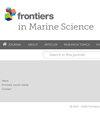Volatilome differences between native and invasive seagrass species in the Caribbean area
IF 3
2区 生物学
Q1 MARINE & FRESHWATER BIOLOGY
引用次数: 0
Abstract
Biological invasions are one of the major threats to ecosystem services and biodiversity. Thus, it is crucial to understand the mechanisms involved in the invasion success of alien species. In addition to generalist traits and high tolerance that enable persistence in novel environments, invasive species can use volatile chemical compounds from specialized metabolism [biogenic volatile organic compounds (BVOCs)] to compete with native species, a process known as allelopathy. These compounds could contribute to invasions in marine environments, and the associated mechanisms need to be deciphered. The aim of this study was to characterize the volatilome (i.e., all BVOCs produced by a species) of two Caribbean native seagrass species (加勒比地区原生海草与入侵海草挥发物的差异
生物入侵是对生态系统服务和生物多样性的主要威胁之一。因此,了解外来物种成功入侵的机制至关重要。除了在新环境中保持持久性的通才特征和高耐受性外,入侵物种还可以利用来自特殊代谢的挥发性化合物[生物挥发性有机化合物(BVOCs)]与本地物种竞争,这一过程被称为化感作用。这些化合物可能有助于海洋环境的入侵,相关机制需要破译。本研究的目的是表征两种加勒比本地海草(Syringodium filiformme和Thalassia testudinum)和一种入侵海草(Halophila tolacea)的挥发性(即一个物种产生的所有BVOCs)。为此,采集叶片样品,通过顶空固相微萃取捕获BVOCs,然后进行气相色谱-质谱分析。托马的挥发油与两种本地物种有显著差异,文献中存在的化合物显示出化感化学性质(如香叶酮、6-甲基、5-庚-2- 1和异硫氰酸环己烷)。我们假设这些化合物可能是“新武器”,以提高H.托马的入侵成功,但它需要进一步的研究,在实验室(如中生态系统)和原位。
本文章由计算机程序翻译,如有差异,请以英文原文为准。
求助全文
约1分钟内获得全文
求助全文
来源期刊

Frontiers in Marine Science
Agricultural and Biological Sciences-Aquatic Science
CiteScore
5.10
自引率
16.20%
发文量
2443
审稿时长
14 weeks
期刊介绍:
Frontiers in Marine Science publishes rigorously peer-reviewed research that advances our understanding of all aspects of the environment, biology, ecosystem functioning and human interactions with the oceans. Field Chief Editor Carlos M. Duarte at King Abdullah University of Science and Technology Thuwal is supported by an outstanding Editorial Board of international researchers. This multidisciplinary open-access journal is at the forefront of disseminating and communicating scientific knowledge and impactful discoveries to researchers, academics, policy makers and the public worldwide.
With the human population predicted to reach 9 billion people by 2050, it is clear that traditional land resources will not suffice to meet the demand for food or energy, required to support high-quality livelihoods. As a result, the oceans are emerging as a source of untapped assets, with new innovative industries, such as aquaculture, marine biotechnology, marine energy and deep-sea mining growing rapidly under a new era characterized by rapid growth of a blue, ocean-based economy. The sustainability of the blue economy is closely dependent on our knowledge about how to mitigate the impacts of the multiple pressures on the ocean ecosystem associated with the increased scale and diversification of industry operations in the ocean and global human pressures on the environment. Therefore, Frontiers in Marine Science particularly welcomes the communication of research outcomes addressing ocean-based solutions for the emerging challenges, including improved forecasting and observational capacities, understanding biodiversity and ecosystem problems, locally and globally, effective management strategies to maintain ocean health, and an improved capacity to sustainably derive resources from the oceans.
 求助内容:
求助内容: 应助结果提醒方式:
应助结果提醒方式:


